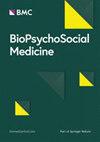Effects of body awareness therapy on balance and fear of falling in patients with chronic obstructive pulmonary disease: a randomized controlled trial
IF 2.4
4区 医学
Q2 PSYCHIATRY
引用次数: 0
Abstract
Assessment of extrapulmonary comorbidities is essential in chronic obstructive pulmonary disease (COPD). Deterioration of balance and increasing fear of falling are two of the most significant extrapulmonary manifestations. Although pulmonary rehabilitation (PR) is well-known and effective for COPD patients, there is a need for alternative treatments to enhance balance and alleviate concerns about falling. This study aimed to investigate the effect of Body Awareness Therapy (BAT), in addition to the PR program, on balance and fear of falling in patients with COPD. Forty-three patients were randomized into two groups: the BAT + PR group (BAT: once a week, 60 min + PR: 30 min, seven days of the week) or the PR group (PR: 30 min, seven days of the week) for eight weeks. Primary (balance, fear of falling) and secondary (dyspnea, muscle strength, functional capacity) outcomes were assessed at two different times: the baseline and end of the eight weeks. Significant improvements were found in dynamic balance (reaction time η2 = 0.777, movement velocity η2 = 0.789, endpoint excursion η2 = 0.687, maximal excursion η2 = 0.887), static balance on firm ground (eyes opened η2 = 0.679, eyes closed η2 = 0.705), dyspnea (η2 = 0.546), muscle strength (η2 = 0.803), and functional capacity (η2 = 0.859) of the BAT + PR group (p < 0.05 for all). The improvement in fear of falling was significantly greater in the BAT + PR group than in the PR group (p < 0.001, η2 = 0.331). The BAT method added to PR was more effective than PR alone in improving balance and reducing the fear of falling in COPD patients. This randomized controlled study was registered at clinicaltrials.gov, NCT04212676 , Registered 28 December 2019.身体意识疗法对慢性阻塞性肺病患者平衡能力和跌倒恐惧的影响:随机对照试验
对慢性阻塞性肺病(COPD)患者进行肺外合并症评估至关重要。平衡能力下降和对跌倒的恐惧感增加是两种最重要的肺外表现。尽管肺康复(PR)已广为人知且对慢性阻塞性肺病患者有效,但仍需要其他治疗方法来增强患者的平衡能力并减轻其对跌倒的恐惧。本研究旨在探讨除肺康复计划外,身体意识疗法(BAT)对慢性阻塞性肺病患者平衡能力和跌倒恐惧的影响。43 名患者被随机分为两组:BAT + PR 组(BAT:每周一次,每次 60 分钟 + PR:每周七天,每次 30 分钟)或 PR 组(PR:每周七天,每次 30 分钟),为期八周。主要结果(平衡、跌倒恐惧)和次要结果(呼吸困难、肌肉力量、功能能力)在两个不同时间进行评估:基线时间和八周结束时间。BAT + PR 组在坚固地面上的静态平衡(睁眼 η2 = 0.679,闭眼 η2 = 0.705)、呼吸困难(η2 = 0.546)、肌肉力量(η2 = 0.803)和功能能力(η2 = 0.859)方面均有显著改善(所有数据的 P 均小于 0.05)。BAT + PR 组在跌倒恐惧方面的改善明显大于 PR 组(P < 0.001,η2 = 0.331)。在改善慢性阻塞性肺病患者的平衡能力和减少跌倒恐惧方面,BAT 法加 PR 比单独使用 PR 更有效。该随机对照研究已在 clinicaltrials.gov 注册,编号为 NCT04212676 ,注册时间为 2019 年 12 月 28 日。
本文章由计算机程序翻译,如有差异,请以英文原文为准。
求助全文
约1分钟内获得全文
求助全文
来源期刊

BioPsychoSocial Medicine
Multiple-
CiteScore
3.60
自引率
0.00%
发文量
23
审稿时长
18 weeks
期刊介绍:
BioPsychoSocial Medicine is an open access, peer-reviewed online journal that encompasses all aspects of the interrelationships between the biological, psychological, social, and behavioral factors of health and illness. BioPsychoSocial Medicine is the official journal of the Japanese Society of Psychosomatic Medicine, and publishes research on psychosomatic disorders and diseases that are characterized by objective organic changes and/or functional changes that could be induced, progressed, aggravated, or exacerbated by psychological, social, and/or behavioral factors and their associated psychosomatic treatments.
 求助内容:
求助内容: 应助结果提醒方式:
应助结果提醒方式:


